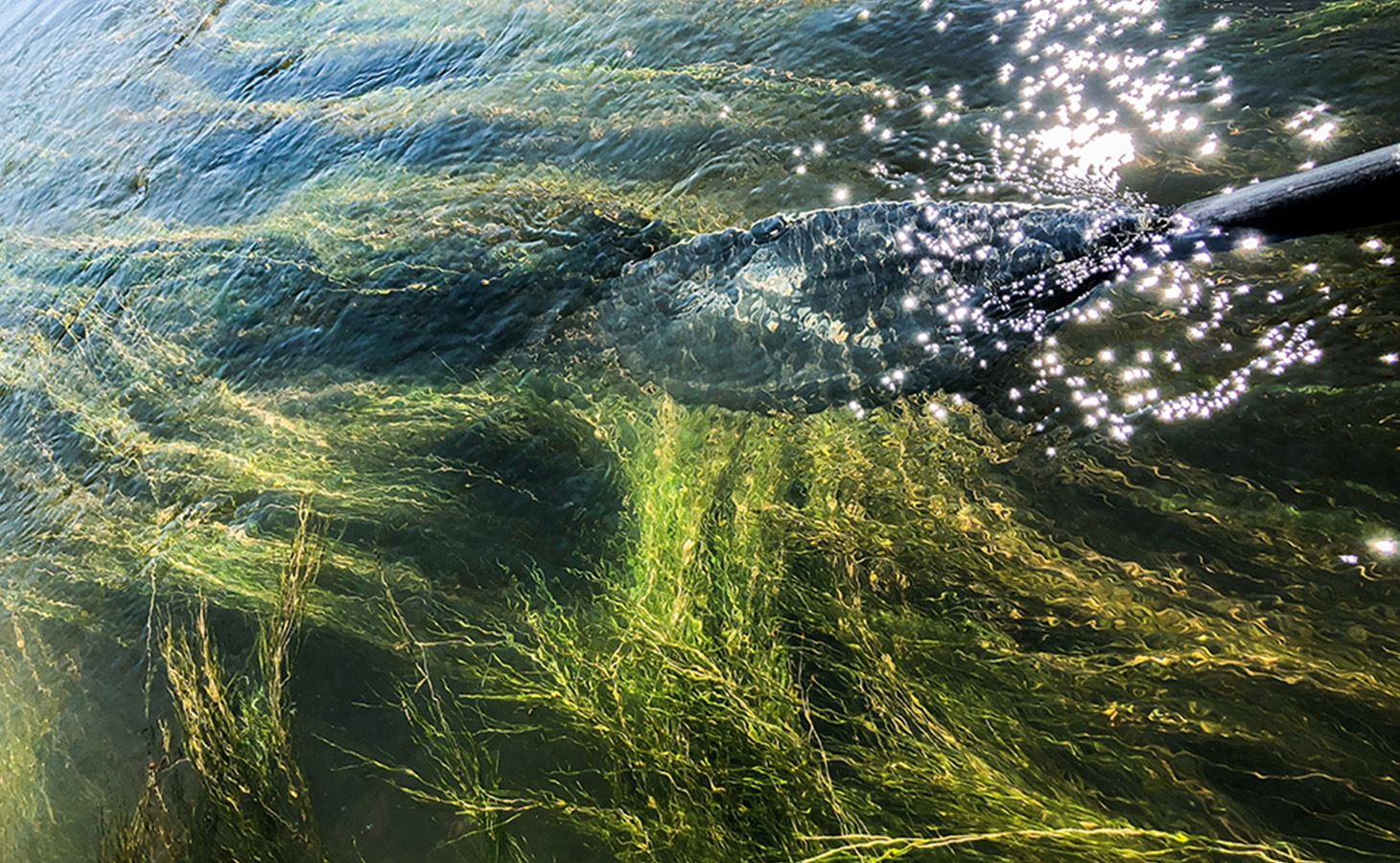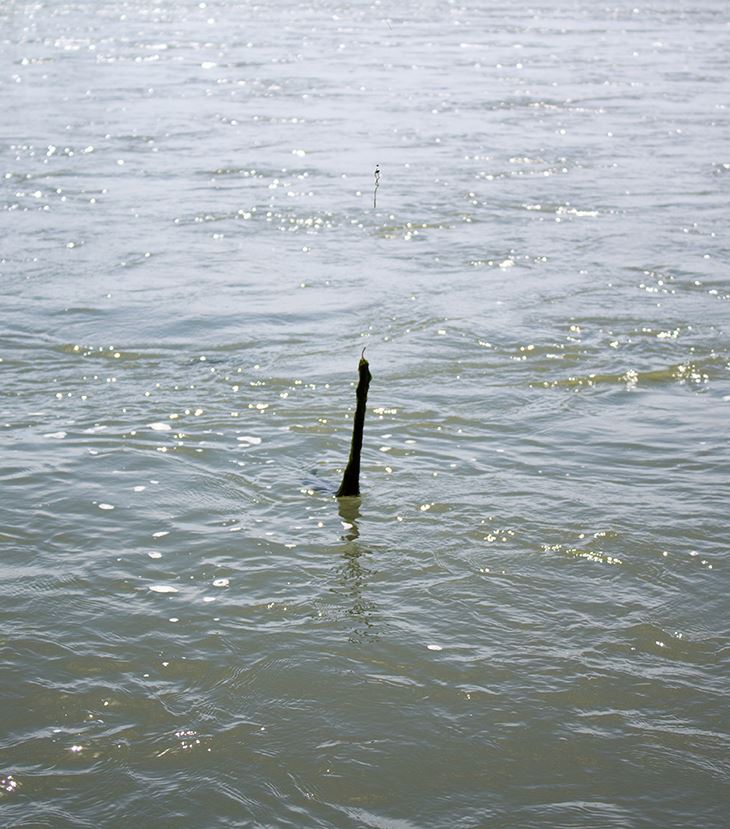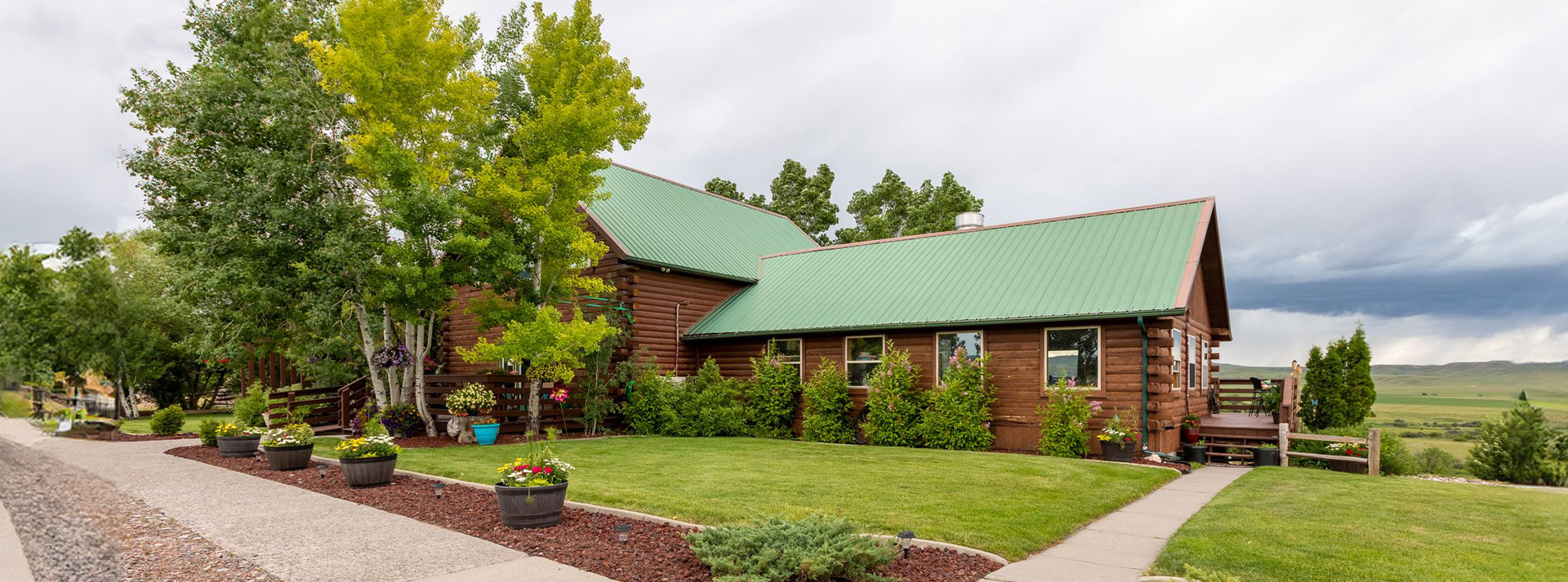
As late August arrives the days start to get noticeably shorter and the nights a little cooler. The hot summer days yield to cool summer nights and as the air conditioners slow down the fishing picks up. The changing of the seasons does something else that is relatively unpleasant on the Bighorn River. It causes the long shoots of grass growing on the river bottom to cut loose and float to the surface. This can cause some tougher fishing conditions. Here are a few tips on how you can stop the grass pout and catch some trout.
Nymphing:
When nymphing it’s important to have a fast sinking rig that sinks in a straight line as fast as possible. Here’s how a fly fisherman can build the right nymph rig:
- Use a 7.5-foot 3x leader to a number 10 swivel.
- Drop a 4-inch section of line off the leader side of the swivel and tie a square knot in the end of it.
- Twist a bb size portion of tungsten putty onto the 4 inch drop piece and make sure you twist it around the square knot you tied.Shape the putty like a long skinny football.This will help it sink faster.
- Then run a 1- 1.5-foot section to the first fly and a 1- 1.5ft section to the second fly.
Fish the nymph rig on heavy seam lines and in the riffles. This time of year fish concentrate heavily on the Trico May fly and other sunken dry flies so find spots where the water piles up on a bank or there might be a heavy swirl that traps food. Don’t ignore the riffle because they are in there to, but you may have to shorten your leader section up to 4- 5 feet to fish them this time of year.
Dry Fly Fishing:
Fish are chowing trico and pseudo mayflies. Both about the same size and in the same water. Here’s what a dry fly fisherman should do:
- Use a 7.5-foot 4x leader to the lead fly.
- Use a 5x tippet to the smaller Trico or pseudo mayfly.
- Try to line up outside of the grass line so if you hook the trout you can try and pull it away from the grass line.
- If possible fish them at a 90-degree angle to the current and make short drifts over the trout.Casting two to three feet over the fish being targeted.
Grass that hasn’t cut loose from the river bottom can be a major ally to your dry fly fishing. Fish will use the tall grass to hide and when the surface bugs are in play they will come out to eat them on the edges of the grass line. Search out the grass lines that are sometimes in the middle of the river and fish them hard. Don’t be afraid to run a 4x tippet to the indicator fly, because the fish will almost always take you into the grass looking for safety. If that happens let them have a ton of slack and often times they will free themselves from the grass.
Streamers:
Streamer fishing can be tough in the late summer months, but will get better as the Brown Tout start spawning, Grass will still be floating in the river when they start to actively spawn. Here’s what a streamer fisherman should do:
- Tie a 5ft section of 2x or stronger leader to the streamer on a loop knot.
- Use a 200 grain 10-20 foot sink tip line
- Work the banks and always give the sink tip a little time to drop your line and streamer below the floating grass.
The best colors seem to vary day to day but stick to the rules. Dark days, dark streamers and light days, light streamers. The grass is primarily concentrated in the main river channel so throwing to the banks is the most effective way to catch trout. If you can get your line below the floating grass work it half way back to the boat. If the streamer and line are catching to much grass than simply work within 3 feet of the banks and hit every little pocket you can.
Late summer to fall fishing on the Bighorn river can be incredibly good, but you have to work a little harder and be a little crafty with your approach. The grass can be a challenge. Grass can be your ally. Remember without grass the Bighorn wouldn’t have the incredible bug population that it does and trout know that. They’re in the grass eating scuds, sow bugs, mayfly nymphs, snail larvae and lots of other things. Figuring out the most effective way to fish the grass is the key to successful late summer and fall fishing on the Bighorn River.


